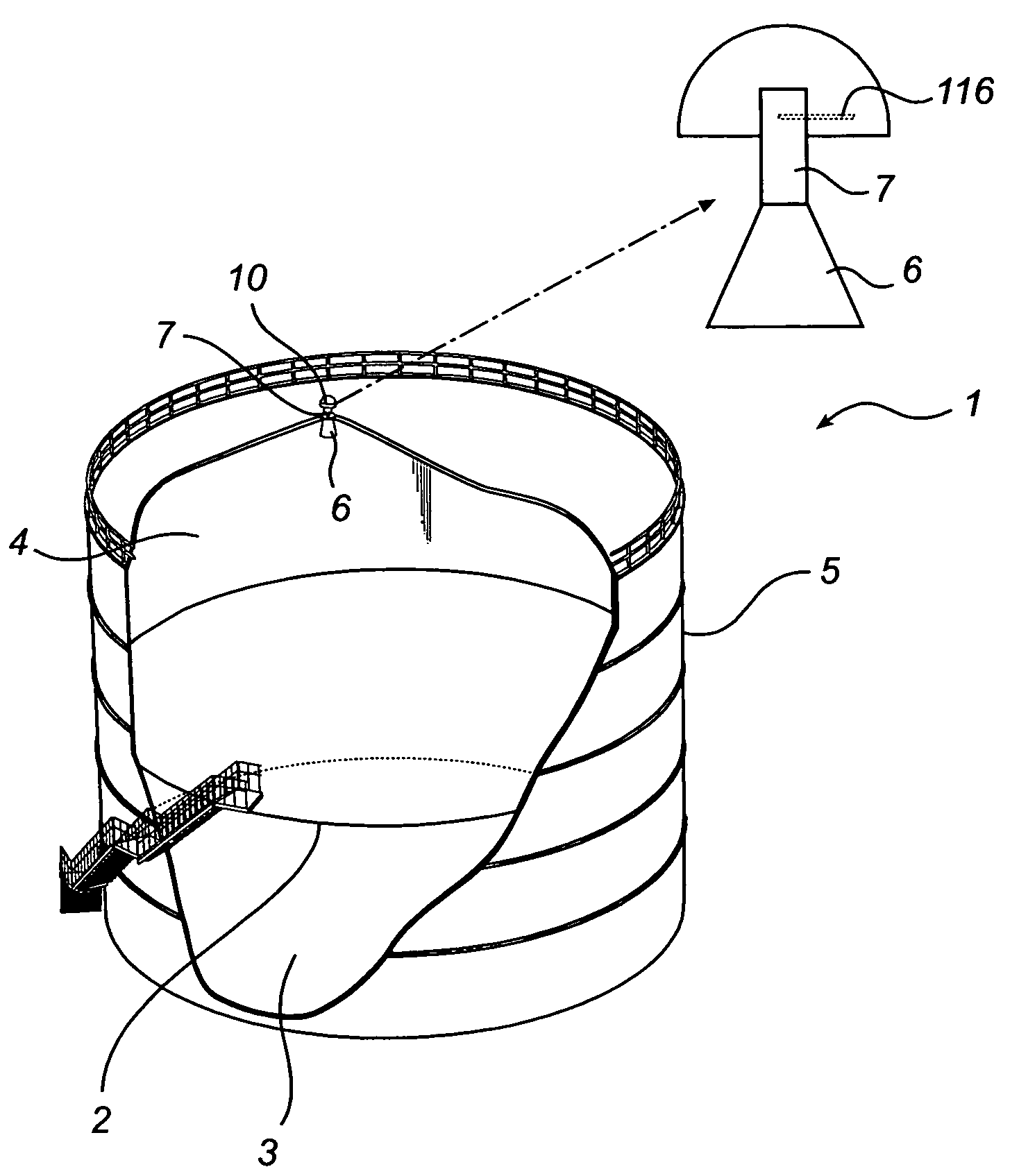Radar level gauge using elliptically or circularly polarized waves
a technology of elliptical or circular polarization and radar level gauge, applied in the direction of radio wave reradiation/reflection, measurement devices, instruments, etc., can solve the problem that in any case, unwanted power coupling may be neglected
- Summary
- Abstract
- Description
- Claims
- Application Information
AI Technical Summary
Benefits of technology
Problems solved by technology
Method used
Image
Examples
first embodiment
[0039] as is illustrated in FIG. 2, the entire microwave circuit arrangement is arranged on a single printed circuit board (PCB) 110. The microwave circuit arrangement comprises feeding probes 120, to be arranged in the waveguide 7 or the antenna 6, a microwave generating unit 140, or a corresponding microwave input port to be connected to a microwave generating unit, a microwave receiving unit 150, or a corresponding output port to be connected to a microwave receiving unit, and a coupling circuitry 130 for transferring and feeding signals between the microwave generating unit and the feeding probes, and between the microwave receiving unit and the feeding probes, respectively.
[0040]The microwave generating unit 140, generally referred to as transmitting unit (TX), is adapted to generate a microwave signal to be used for pulsed radar level measurement or FMCW, as is per se well known in the art. The microwave generating unit 140 may be implemented on the PCB 110. However, as an alt...
second embodiment
[0050]Further, the coupling circuit 230 comprises a 0 degree couplers 234, 235 connected to the output of the TX 140 and the input of the RX 150, respectively. The 0 degree couplers are commonly known as dividers, and e.g. 0 degree Wilkinson power dividers may be used. The divider 234 connected to the TX 140 is connected to the transmitting feeding probes 231, 232. However, one of the divided signal parts is provided through a 90 degree phase delay 231 so that the signals provided to the transmitting feeding probes are correspondingly phase separated. The 90 degree phase delay may e.g. be realized by means of a 90 degree coupler, as discussed in the foregoing. However, preferably the 90 degree phase delay is realized with 90 degrees Schiffman phase shifters, giving a more wide-band phase-shift. Similarly, the divider 235 connected to the RX 150 receives signals from the receiving feeding probes 233, 234. However, one of the received signal parts is provided through a 90 degree phas...
third embodiment
[0054]Further, the coupling circuit 330 comprises a 0 degree couplers 334, 335 connected to the output of the TX 140 and the input of the RX 150, respectively. For example, 0 degree Wilkinson power dividers may be used. The dividers 334, 335 are each connected to a 90 degree coupler 331, 332. The 90 degree phase delay may e.g. be realized by means of a 90 degree coupler, as discussed in the foregoing. The 90 degree couplers are each connected to two feeding probes 321, 322 and 323, 324, respectively, in order to provide phase differentiated signals to / from said feeding probes. Further, the dividers 334, 335 are each connected to a common crossing 336 (marked X-ing), which may e.g. be realized by means of two by two 90 degrees hybrid couplers or by a more conventional line crossing. The crossing 336 is further connected to each of the 90 degree couplers 331 and 332. With this type of crossing it is still possible to keep the pattern on the PCB within one single layer, whereby an ine...
PUM
 Login to View More
Login to View More Abstract
Description
Claims
Application Information
 Login to View More
Login to View More - R&D
- Intellectual Property
- Life Sciences
- Materials
- Tech Scout
- Unparalleled Data Quality
- Higher Quality Content
- 60% Fewer Hallucinations
Browse by: Latest US Patents, China's latest patents, Technical Efficacy Thesaurus, Application Domain, Technology Topic, Popular Technical Reports.
© 2025 PatSnap. All rights reserved.Legal|Privacy policy|Modern Slavery Act Transparency Statement|Sitemap|About US| Contact US: help@patsnap.com



